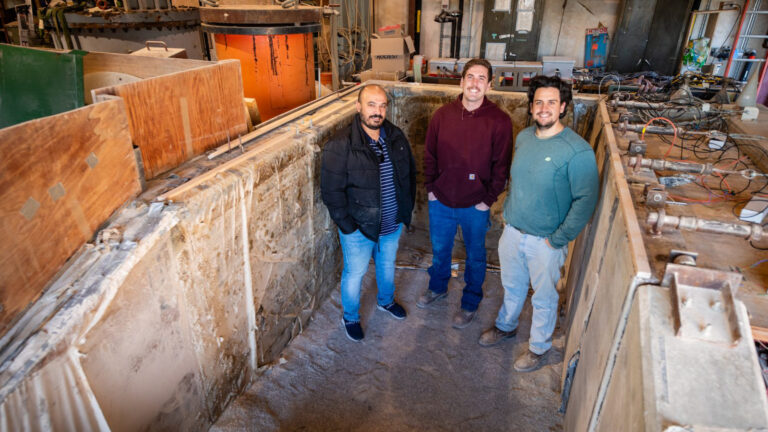
Coastal cities in Virginia and around the world are increasingly turning to seawalls to protect residents from flooding exacerbated by climate change.
At the same time, however, climate change could make sea walls less effective. Sherif Abdelaziz, an associate professor at Virginia Tech's College of Engineering, said officials need to know more about how and why they build new infrastructure that is expected to last into this century.
Many of the existing seawalls were built more than 50 years ago, and they have begun to sink or move into place, he said.
“A clear example is the Tower of Pisa. It was not built to lean,” Abdelaziz said. Like the Italian tower, “retaining walls can move inward, move backwards, sink, and rotate.”
But some of those walls are moving more than engineers expected when they were designed and built decades ago, he said.
Abdelaziz is part of a research team studying why. They believe that warming temperatures and flooding due to climate change could undermine the stability of the sea walls in the long term.
“So the hypothesis is that as temperatures rise due to climate change, the pressure on the walls will actually increase significantly,” he said.
The repeated wetting and drying cycles of waves over time as they crash against seawalls can also have an effect.
Inside a building on the Blacksburg campus, researchers are using a concrete research wall to test whether that's true. It is approximately 8 feet tall and 20 feet wide.
Abdelaziz said the process would take several years. First, test dry soil around the wall at room temperature as a baseline. Then slowly increase the temperature and add water to simulate a flood. Sensors embedded in walls and soil provide data on how everything reacts.
“You basically start adding one material at a time, so you can understand how each material affects the others.”
A sea wall can be anything from a small retaining wall protecting the shoreline of private property to something like the gigantic eight-mile-long flood wall that Norfolk plans to build around downtown.

Part of an existing waterproof wall in downtown Norfolk. It was built in 1971 by the Army Corps. It will be expanded and increased in height as part of the new project.
The Norfolk sea wall and several other facilities planned along the East Coast, including Charleston, Miami and New York, are part of an effort by the federal Army Corps of Engineers, which was formed after Hurricane Sandy.
Historically, temperature has not been part of the engineering design parameters for seawalls, Abdelaziz said.
He said the Army Corps has provided more than $20 million in funding for retaining wall research at Virginia Tech across several projects. He hopes that means the Corps can use the findings to revise its design manual.
The new project also involves researchers from across the pond. Virginia Tech is collaborating with Heriot-Watt University in Edinburgh, Scotland. The UK counterpart will conduct laboratory tests simulating climate change scenarios to complement the Virginia wall experiment.
Abdelaziz said the goal is not only to identify problems, but also to develop solutions for better coastal infrastructure.
“I think now we're looking at the effects of the next 100 years. We don't want our children and grandchildren to go through what we're going through right now.” he said. “So our vision has this very clearly. Yes, engineers build things, but we also look for ways to improve the way we build things. Stay tuned.”


